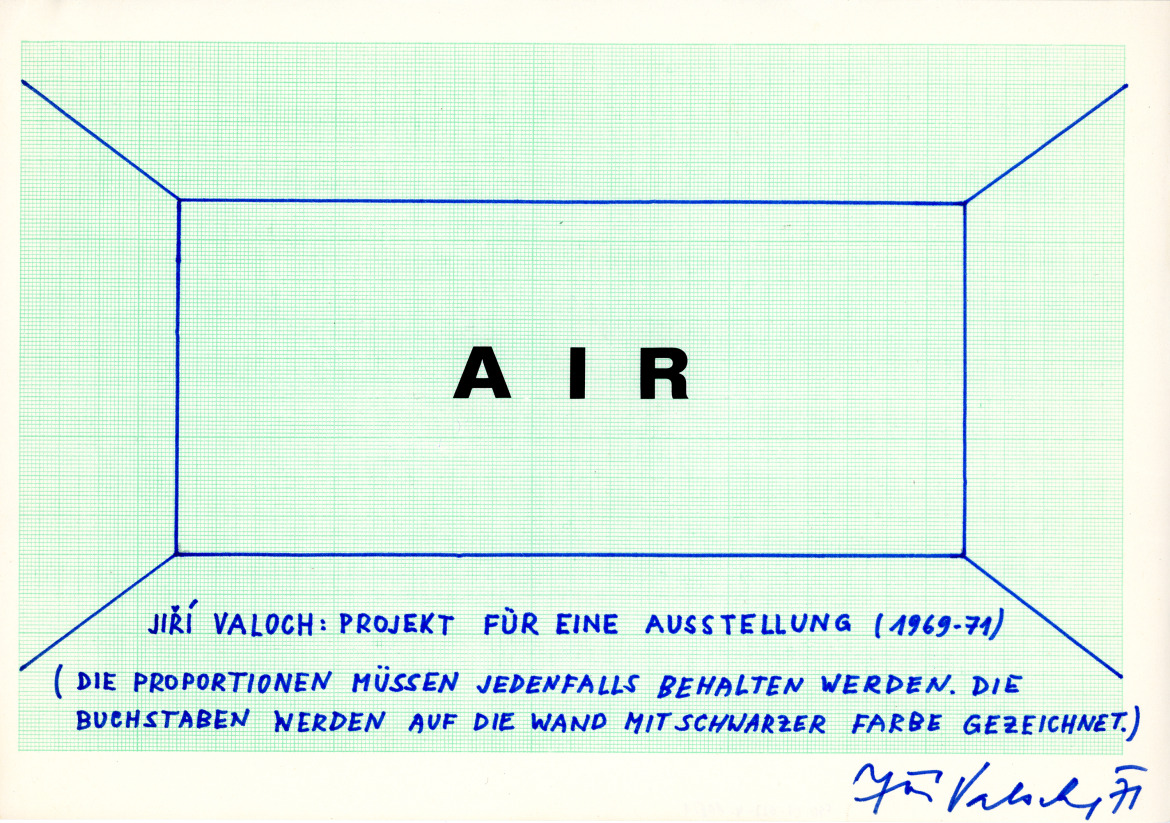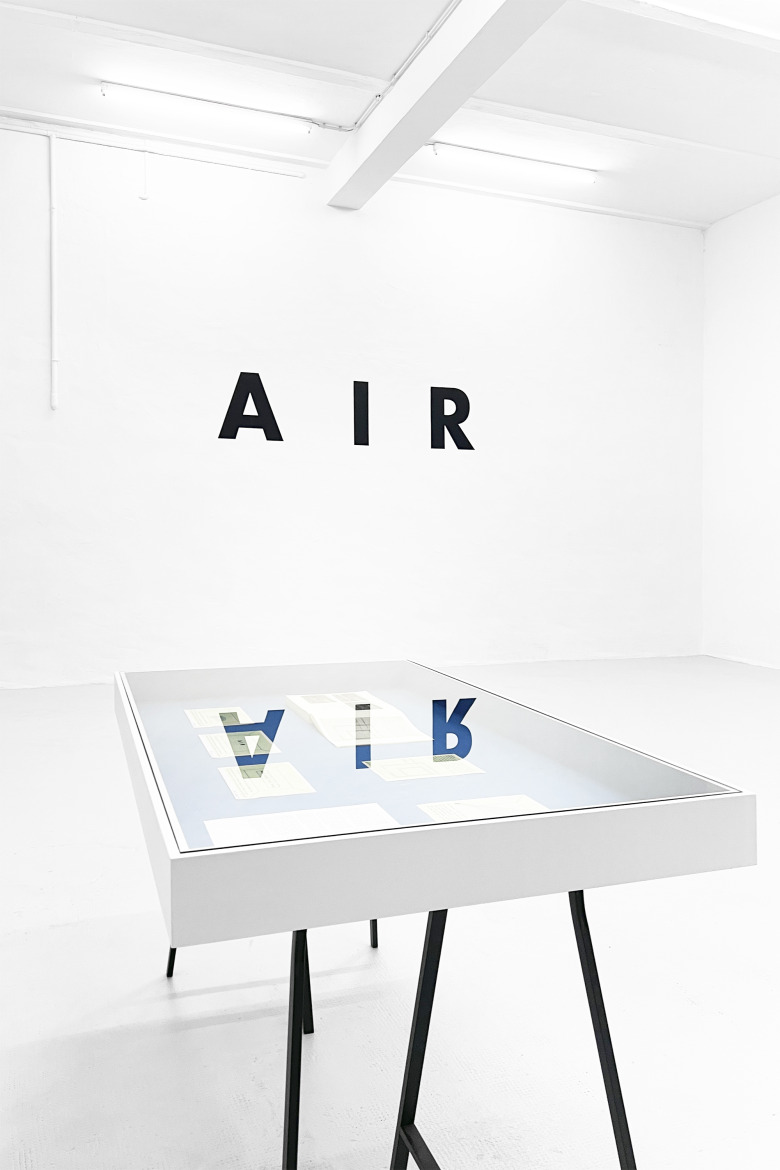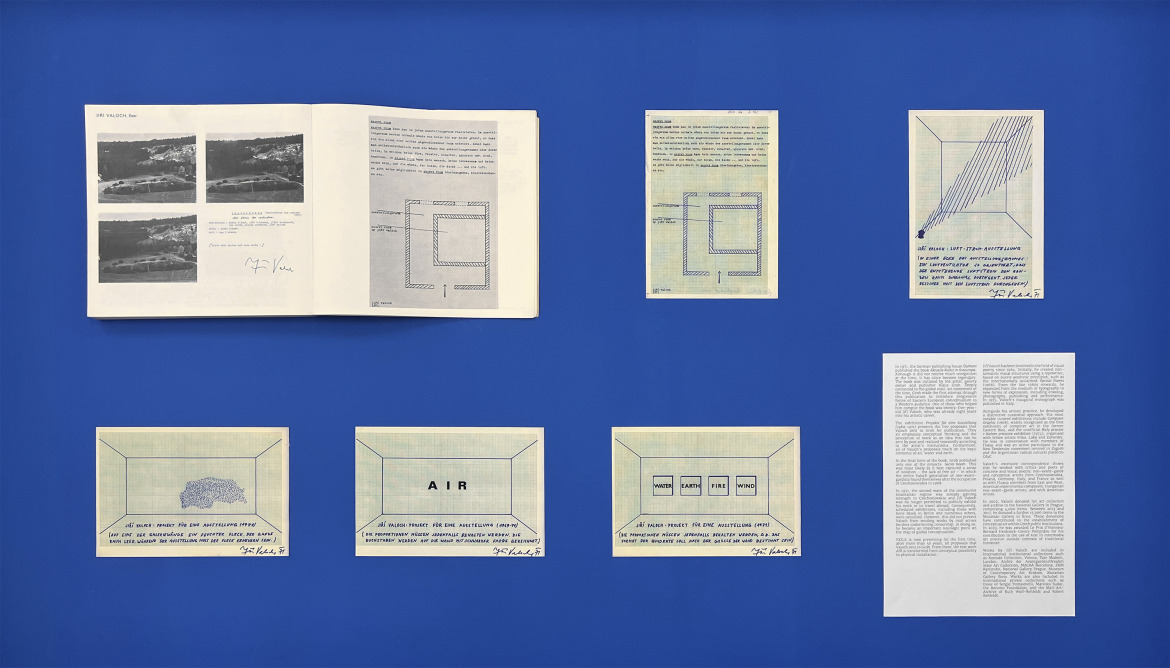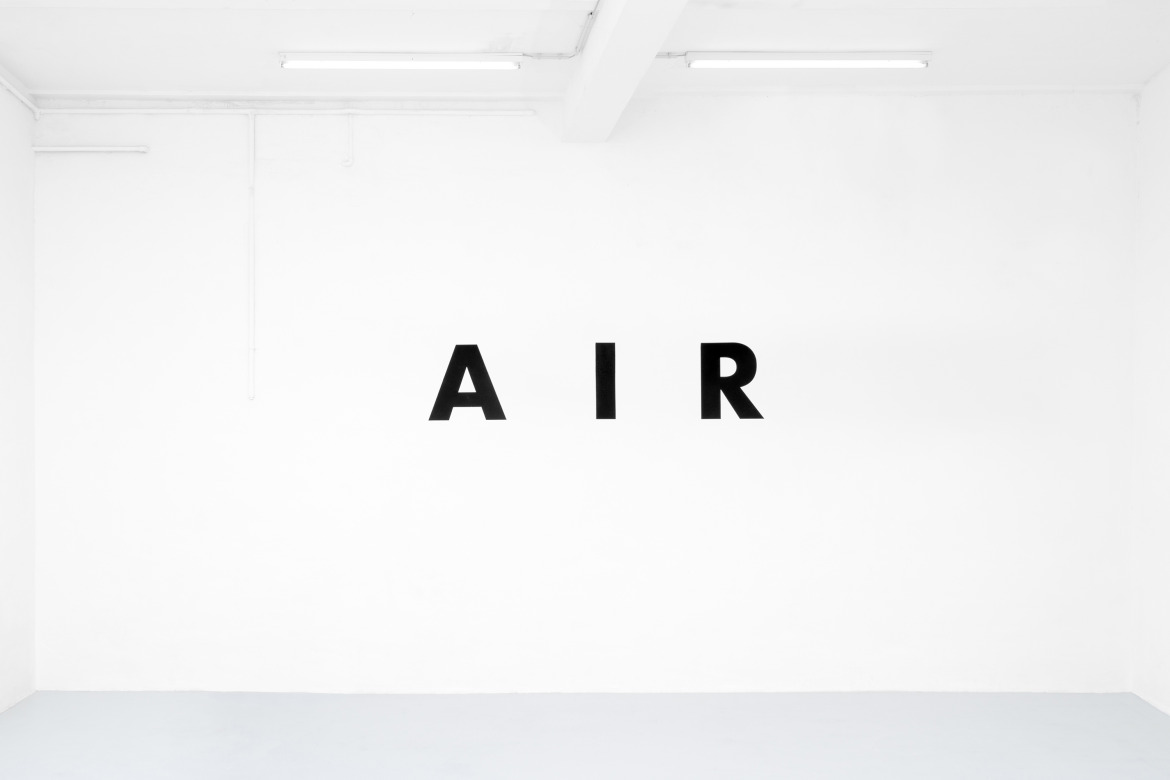







EXILE Erfurt is happy to present a solo exhibition by Czech artist Jiří Valoch (born 1946, lives in Brno, Czech Republic).
In 1971, the German publishing house Dumont published the book Aktuelle Kunst in Osteuropa. Although it did not receive much recognition at the time, it has since become legendary. The book was initiated by the artist, gallery owner and publisher Klaus Groh. Deeply connected to the global mail-art movement of the time, Groh made the first attempt through this publication to introduce progressive forms of Eastern European conceptualism to a Western audience. One of those who helped him compile the book was twenty-five-year-old Jiří Valoch, who was already eight years into his artistic career.
The exhibition Projekt für eine Ausstellung (1969-1971) presents the five proposals that Valoch sent to Groh for publication. They all emphasise conceptual thinking and the perception of work as an idea that can be sent by post and realised repeatedly according to the artist’s instructions. Furthermore, all of Valoch’s proposals touch on the basic elements of air, water and earth.
In the final form of the book, Groh published only one of the projects: Secret Room. This was most likely as it best captured a sense of isolation – the lack of free air – in which the entire Valoch generation of neo-avant-gardists found themselves after the occupation of Czechoslovakia in 1968.
In 1971, the second wave of the communist totalitarian regime was already gaining strength in Czechoslovakia and Jiří Valoch was no longer permitted to publicly exhibit his work or to travel abroad. Consequently, scheduled exhibitions, including those with René Block in Berlin and numerous others, were cancelled. However, this did not prevent Valoch from sending works by mail across borders undermining censorship. In doing so, he became an important neuralgic point on the map of global conceptualism.
EXILE is now presenting for the first time, after more than 50 years, all proposals that Valoch sent to Groh. From these, the text work AIR is transformed from conceptual possibility to physical installation.
Jiří Valoch has been involved in the field of visual poetry since 1964. Initially, he created non-semantic visual structures using a typewriter, based on purely aesthetic principles, such as the internationally acclaimed Optical Poems (1966). From the late 1960s onwards, he expanded from the medium of typography to new forms of expression, including drawing, photography, publishing and performance. In 1975, Valoch’s inaugural monograph was published in Italy.
Alongside his artistic practice, he developed a distinctive curatorial approach. His most notable curated exhibitions include Computer Graphic (1968), widely recognised as the first exhibition of computer art in the former Eastern Bloc, and the unofficial Biely priestor v bielom priestore exhibition (1974), organised with fellow artists Filko, Laky and Zavarsky. He was in conversation with members of Fluxus and was an active participant in the New Tendencies movement centred in Zagreb and the Argentinian radical cultural platform CAyC.
Valoch’s extensive correspondence shows that he worked with critics and poets of concrete and visual poetry; neo-avant-garde and conceptual artists from Czechoslovakia (theoretician Jindřich Chalupecký, artists Jan Steklik, Jiří H. Kocman, Alex Mlynarčik, Stano Filko, Rudolf Sikora, Július Koller, Karel Adamus, Milan Grygar, Petr Štembera, Milan Knižák, Jan Wojnar, Zdeněk Barborka, Ivan M. Jirous, Jiří Kolar, Ladislav Novák, and Jaroslav Malina), Poland (Andrzej Lachowicz, Natalia LL, and Henryk Stażewski), Germany (Bernard Heidsieck, Ferdinand Kriwet, along with theoretician Max Bense), Italy (Adriano Spatola and Ugo Carrega), and France (Pierre Garnier and Henri Chopin); with Fluxus members from East and West; American experimental composers (Steve Reich); Hungarian neo-avant-garde artists (Tamàs Szentjóby/St. Auby, Endre Tót, and Imre Bak); and with American artists (Christo, Allan Kaprow, and Seth Siegelaub).
In 2002, Valoch donated his art collection and archive to the National Gallery in Prague, comprising 4,000 items. Between 2013 and 2017, he donated a further 15,000 items to the Moravian Gallery in Brno. These donations have contributed to the establishment of conceptual art within Czech public institutions. In 2023, he was awarded Le Prix d’Honneur Bernard Heidsieck-Centre Pompidou for his contribution to the use of text in intermedia art practice outside contexts of traditional literature.
Works by Jiří Valoch are included in international institutional collections such as Kontakt Collection, Vienna, Tate Modern, London, Archiv der Avantgarden/Dresden State Art Collection, MACBA Barcelona, ZKM Karlsruhe, National Gallery Prague, Museum of Contemporary Art Krakow, Moravian Gallery Brno. Works are also included in international private collections such as those of Sergio Tomasinelli, Marinko Sudac, the Bonotto Foundation, and the Mail-Art-Archive of Ruth Wolf-Rehfeldt and Robert Rehfeldt.
The exhibition is organised in collaboration with Jana Písaříková and Ondřej Chrobák, Moravian Gallery, Brno and Anna Ebner-Quadri, and the editions, Vienna. We cordially like to thank the Archiv der Forschungsstelle Osteuropa an der Universität Bremen, Osteuropasammlung Klaus Groh for supporting the exhibition.
→Wohin am Wochenende, Monopol Magazine, September, 25, 2025 (PDF, 1.6 MB)



